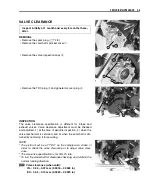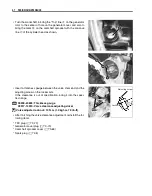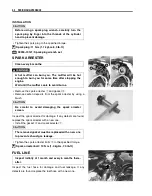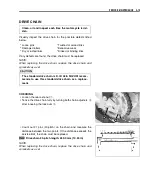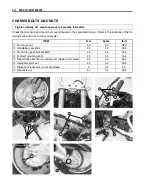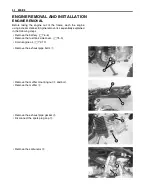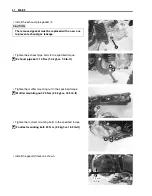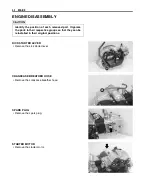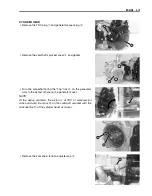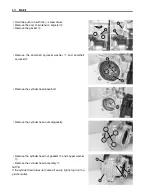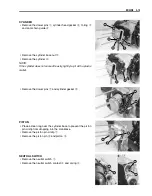
PERIODIC MAINTENANCE 2-18
COMPRESSION PRESSURE CHECK
The compression pressure reading of a cylinder is a good indicator of its internal condition.
The decision to overhaul the cylinder is often based on the results of a compression test. Periodic mainte-
nance records kept at your dealership should include compression readings for each maintenance service.
COMPRESSION PRESSURE SPECIFICATION
Low compression pressure can indicate any of the following conditions:
* Excessively worn cylinder walls
* Worn piston or piston rings
* Piston rings stuck in grooves
* Poor valve seating
* Ruptured or otherwise defective cylinder head gasket
COMPRESSION TEST PROCEDURE
NOTE:
* Before testing the engine for compression pressure, make
sure that the cylinder head nuts are tightened to the specified
torque values and the valves are properly adjusted.
* Warm up the engine before testing.
* Make sure that the battery is fully-charged.
Remove the related parts and test the compression pressure in
the following manner:
• Remove the spark plug. (
2-8)
• Install the compression gauge and adaptor in the spark plug
hole. Make sure that the connection is tight.
• Keep the throttle grip in the fully opened position.
• Press the starter button and crank the engine for a few sec-
onds. Record the maximum gauge reading as the cylinder
compression.
\
09915-64512: Compression gauge
09913-10750: Adaptor
Standard
Limit
1 300 – 1 700 kPa
(13 – 17 kgf/cm², 185 – 242 psi)
1 100 kPa
(11 kgf/cm², 156 psi)



